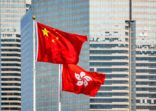“We see currently that this segment of illiquid investments is the fastest growing part of our clients’ portfolios, [which are institutional investors],” Angelina Parmova, head of business development at GAM, said in a panel discussion at the event in Hong Kong.
Parmova added that within illiquid investments, infrastructure has become a hot topic for private groups of investors.
High net worth investors are also warming to alternatives, particularly private equity, private debt and bank loans, according to Jervis Smith, managing director and head of investor services for Luxembourg at Citibank.
“For the wealthier individuals, these are extremely interesting asset classes,” he said.
A recent survey conducted by Pimco reveals similar sentiment within Asia’s wealth management industry. A third of the 34 private and retail banks and family offices surveyed indicated that they intend to increase their exposure to alternative assets, particularly liquid alternatives, private equity and real estate, long/short equity and long/short credit.
“Investors are increasingly extending their income-generating universe beyond public markets to capture the complexity and illiquidity premia offered by alternative asset classes,” Pimco’s Scott Steele, head of global wealth management for Hong Kong and Singapore, said in the report.
“Alternative strategies that exploit well-known structural risk premia, such as carry, value and momentum, across asset classes are growing increasingly popular as investors look to enhance returns and diversification,” he added.
Roger Bacon, Citi Private Bank’s head of investments, said previously that he is seeing a pick-up in demand for hedge fund products. “We’ve seen high-quality risk-adjusted returns from many of the managers that we’re focusing on, and our sales volume has gone up dramatically.”
Clients tend to favour fundamental equity long-short hedge funds rather than macro or fixed income hedge funds, he added.
Last year, hedge funds globally saw net inflows of $30.3bn, bringing the total industry AUM to a new record high of $3.28trn, according to an Evestment report.
Passporting talk
The ALFI panel also discussed the progress of the different passporting schemes in Asia.
Edwin Chan, chief administrative officer for Asia-Pacific at JP Morgan Asset Management, said that it may take longer than expected before the different passporting schemes see momentum.
“At the end of the day, Asia is not one country. And all of these different countries are asking, ‘What is the benefit for me?’ and that is preventing the wheels from turning,” he said.
Asia’s passporting schemes include the Hong Kong-China Mutual Recognition of Funds (MRF), which is the most successful with about 30 funds for sale in total. The Asean CIS scheme (Malaysia, Thailand, Singapore), which launched before the MRF, has only six funds participating. The hope for the Asia Region Funds Passport (ARFP), which involves Korea, Japan Australia and Thailand, is that it will be fully implemented this year.
Chan remains confident that the various passporting schemes in the region will eventually gain traction.
“The European Union took quite a few years to get Ucits up and running,” he said.
Camille Thommes, ALFI’s director general, said recently that the success of the fund passporting regimes in Asia has “remained modest”.
Thommes said that although these schemes may give domestic investors in participating markets more access to different products, local fund houses have already provided diversification by launching feeder funds.
Foreign funds in local wrappers (feeder funds) bought through a local bank bring far more familiarity and comfort to domestic investors than a foreign fund introduced through a novel passporting scheme.
















